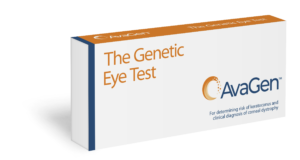

The past decade has brought the eye care community a wealth of powerful new innovations, from advanced ocular imaging to new and more effective treatments for conditions from dry eye to age-related macular degeneration. One of the truly exciting advances in optometry, however, brings us back to our very roots: our genes.
There has been an abundance of advances made in genetics, in no small part from the Genome Project, which helped usher in a new era of faster, more efficient ways to sequence genes. These advancements, in turn, have helped the scientific community gain tremendous new insights into how our genes work and operate. (As a side note, there are a number of remarkable pioneering female geneticists, such as Barbara McClintock, Nettie Stevens and Rosaline Franklin.)
As a number of medical fields have benefited from these advances, such as oncology, we are now beginning to see eye care also benefit from these scientific breakthroughs.


As KC is often overlooked, we now have the opportunity to provide greater care and support for our patients. This condition also has a dramatic economic impact.
Research has demonstrated that people with KC may pay more than $25,000 for the cost of care over a lifetime once diagnosed1, and about half of patients spend more than $1,000 annually for treatment costs2. Further, according to a recent publication in March 20213, patients who undergo corneal collagen cross-linking (CXL) save nearly $44,000 over a lifetime due to increased productivity and lowered medical costs.
If your practice is anything like mine, I find myself having ‘moments of pause’ with certain patients, wondering if they ‘only’ have myopia, astigmatism, or something more severe. We are learning that KC may be greatly misdiagnosed, with prevalence in some ethnicities as high as 1:3754 or 1:845.
By integrating AvaGen into practice, we have a powerful new tool to help guide treatment decisions and develop more effective management pathways, including more frequent monitoring and referring a patient to an ophthalmologist at the appropriate juncture if treatment such as CXL is needed.
Also, both doctors and patients have access to complimentary genetic counseling. These highly trained professionals not only help the patient understand the genetic aspects of their disease, but I have found my interaction with them very valuable. They are part of the team: I have the eye care and clinical expertise and they have the deep genetic knowledge, and together we can support patients to understand the implications of having sight-threatening diseases. Together we can help protect and preserve vision as much as possible, which is fundamental to what we do as eye care providers.
As KC is a genetic disease, if a patient is diagnosed with this condition, it is appropriate to recommend their family members, including any children, to be tested for KC. Early detection makes all the difference in helping preserve sight. It is possible to even test very young children as one’s genes do not change over a lifetime. The test is simple to administer without pain, as the sample is collected by swabbing the patient’s cheek. The sample is then sent to Avellino’s high complexity CLIA-certified lab for analysis, and the practitioner receives the results via a HIPAA-secured patient portal in a few weeks.
Environmental factors can also play a role, so I counsel patients to not rub their eyes and to use topical allergy eyedrops such as mast cell stabilizer / antihistamines to relieve symptoms of itch associated with ocular allergy.
AvaGen is a sea change in how we practice and counsel patients for those seeking refractive surgery; exhibiting signs or symptoms of KC; and/or family members of those with KC or corneal dystrophies. I am also encouraged by the entry of genetics into eye care and incorporating these highly effective diagnostic methods not only in practice, but more ubiquitously in the industry as a whole. The next innovative chapter of eye care is here, which will improve our ability to support, treat and improve the quality of life for our patients, which is something we should all look forward to.
References
1, 2 – https://www.nkcf.org/living-keratoconus/
3 – Lindstrom, Richard L., Icon, John P., Donnenfeld, Eric, Thompson, Vance, Kratochvil, David … Corneal cross-linking versus conventional management for keratoconus: a lifetime economic model. Journal of Medical Economics. (March 2021.) Retrieved from https://www.tandfonline.com/doi/full/10.1080/13696998.2020.1851556
4 – Godefrooij DA, de Wit GA, Uiterwaal CS, Imhof SM, Wisse RP. Age-specific incidence and prevalence of keratoconus: A nationwide registration study. Am J Ophthalmol 2017;175:169-172.
5 – Chan E, Chong EW, Lingham G, Stevenson LJ, Sanfilippo PG, Hewitt AW, Mackey DA, Yazar S. Prevalence of Keratoconus Based on Scheimpflug Imaging: The Raine Study. Ophthalmology. 2021 Apr;128(4):515-521. doi: 10.1016/j.ophtha.2020.08.020. Epub 2020 Aug 26. PMID: 32860813.



